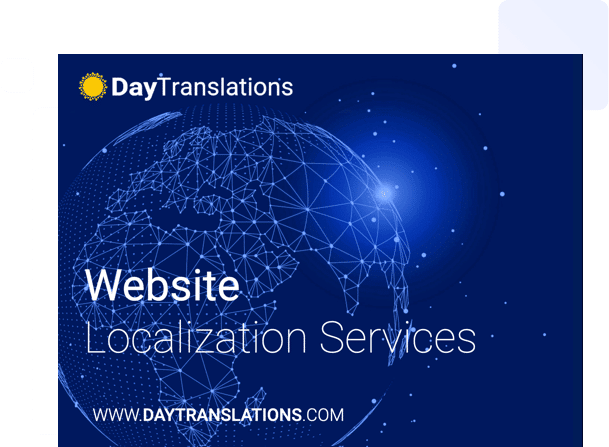IT support has already been global for several decades. With businesses offering services worldwide, the number of individuals seeking assistance has grown, too. Sometimes, when companies enter a new geographical market, they don’t adapt fast enough, and their new audiences feel unappreciated because they speak different languages — literally so. That’s why such companies turn to translation and interpreting services — a straightforward and increasingly universal solution.
Is IT support translation worth it, though? And if yes, how do you make it work?
How Language Barriers Damage IT Support
While companies may naturally lean toward saving resources and cutting additional expenditures on multilingual IT support, the choice can bite back painfully. Here are the most common consequences of not having translation services in your customer service.
Misunderstandings Result in Technical Failure
This problem affects both users and support agents — leading to misunderstandings on both sides. Whether your support specialists don’t understand what the user struggles with or the user can’t properly discern the instructions, the consequences can cause software malfunctions, incorrect configurations, or even complete system crashes.
Security Risks Are Real
Language barriers can do worse than simply cause you a minor headache. They can lead to security breaches, software failure, or your users sharing information with someone else (to get help in their native language), all of which can result in data loss, legal liability, or customer churn.
Resolution Processes Are Slow
This one’s pretty simple: language mismatches make users repeat themselves again and again, and IT customer support cannot provide the right help. Not only does this frustrate and damage brand reputation, but it also eliminates the core purpose of such services — offering timely assistance.
Unsatisfied Customers, Worse Reputation
Customers want to be understood and treated with respect, but language barriers make it nearly impossible for them to emotionally connect and express their needs or frustrations. When customers feel ignored, satisfaction naturally declines. This, in turn, damages the business reputation, depending on the number of people the company fails to cater to.
Breaking the Barriers With IT Support Translation
Let’s shift the focus to how translation can improve the IT support experience. What can professional translation services offer your brand, and how does it make your users happier?
Problems Solved, Fast
Customers don’t like problems. They like problems solved. Preferably, over a quick call or a short chat. Translation tools, especially those built into live chat and ticketing systems, enable real-time communication without language delays. With integrated translation features, customers no longer need to repeat themselves. This will leave a much more pleasant and lasting impression and reinforce trust. Incorporating an IT ticketing system ensures that every issue is tracked, prioritized, and resolved efficiently across all communication channels.
Inclusive Support, Closer Users
At its core, the ability to provide IT support in more than a few widespread languages is about inclusion. This delivers a crucial message to your audience: each user is valuable, regardless of location and language. This impresses the entire base, which can build trust in your team’s competence and commitment to customer care.
Better Self-Service Efficiency
Ideally, a customer shouldn’t have many reasons to reach out to support because it means that the product or service functions well. However, they might also want to solve their challenges on their own without constantly seeking individualized help from specialists. But when the language translation isn’t available, they have few options but to call or text. With efficient translations, users can find answers themselves without contacting support, reducing ticket volume and response time.
Personalized and Empathetic Interactions
Even IT help desk interactions benefit from empathy — especially when users are stressed or frustrated. Awareness of the language nuances makes this possible and resolves more than just technical aspects of the dialogue — it also establishes a more natural and personal connection. If such interactions become common through all channels, it will boost user retention and ensure long-term user loyalty.
Best Practices for Implementing Translation in IT Support
The exact strategies businesses choose, depend significantly on their budget, number of specialists, the audience they primarily target, and the area where they provide IT services. However, these are universal tips that can facilitate your brand’s success.
Start With the Right Tools
All types of support, particularly technical-related ones, need to rely on a smooth integration of all the software already engaged. Since translation services aren’t the core function of customer support, businesses may want to consider what programs they already have and which tools will integrate well with them. Help desk systems like Zendesk, Freshdesk, or Intercom have built-in multilingual support or integrate with AI-based translation tools. Make sure your team can afford to use these programs or services in the long run.
Be Inclusive but Prioritize
If you’ve ever wanted your business to have a social impact and demonstrate your company’s focus on diversity, translation is a great opportunity for it. Undeniably, customer support matters for all regions you support, but your company has limited resources. That’s why it’s best to start by first translating the key resources (FAQs, tutorials, standardized responses) into the most commonly used languages. You can expand later, but the first quick wins will help you keep on track while diversifying.
Train Your Human Agents to Use Tools Well
Even details like using translation instruments determine translation efficiency. Teach your support specialists how their word choice affects message interpretation and coach them to write clear and concise messages.
Keep It Simple
Most people who refer to customer service aren’t IT prodigies. They struggle with understanding complex technical language and would rather hear simple explanations with practical steps to follow. In translation, many people tend to overcomplicate and overexplain, diminishing the effectiveness of the interpretation. Avoid this error by keeping it user-friendly.
Transform Your IT Support by Speaking Your Users’ Language(s)
Translation and interpretation help humanize IT support by simplifying communication and showing users they’re heard — not just helped. While each company is limited in resources, it will benefit financially and, more importantly, in terms of customer loyalty and trust, when it invests in offering documentation, product instructions, and support communication in their native language. It keeps users engaged and the company’s reputation clean, all while remaining relevant and in tune with the audience’s needs.












Sorry, the comment form is closed at this time.